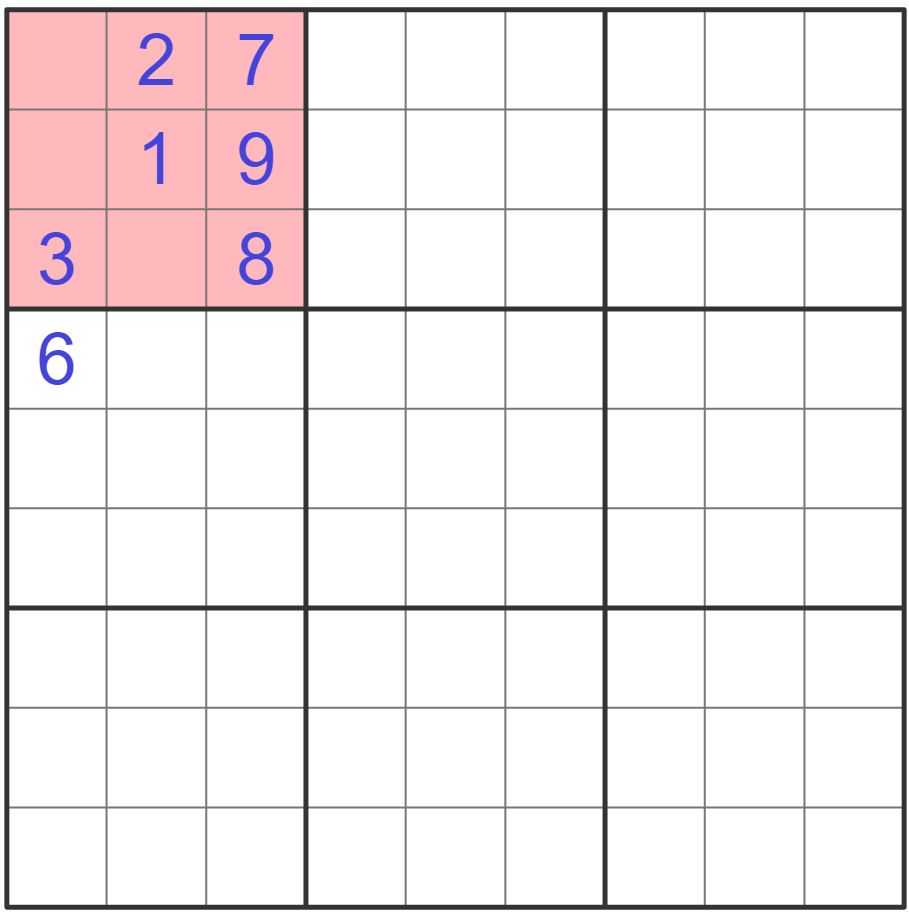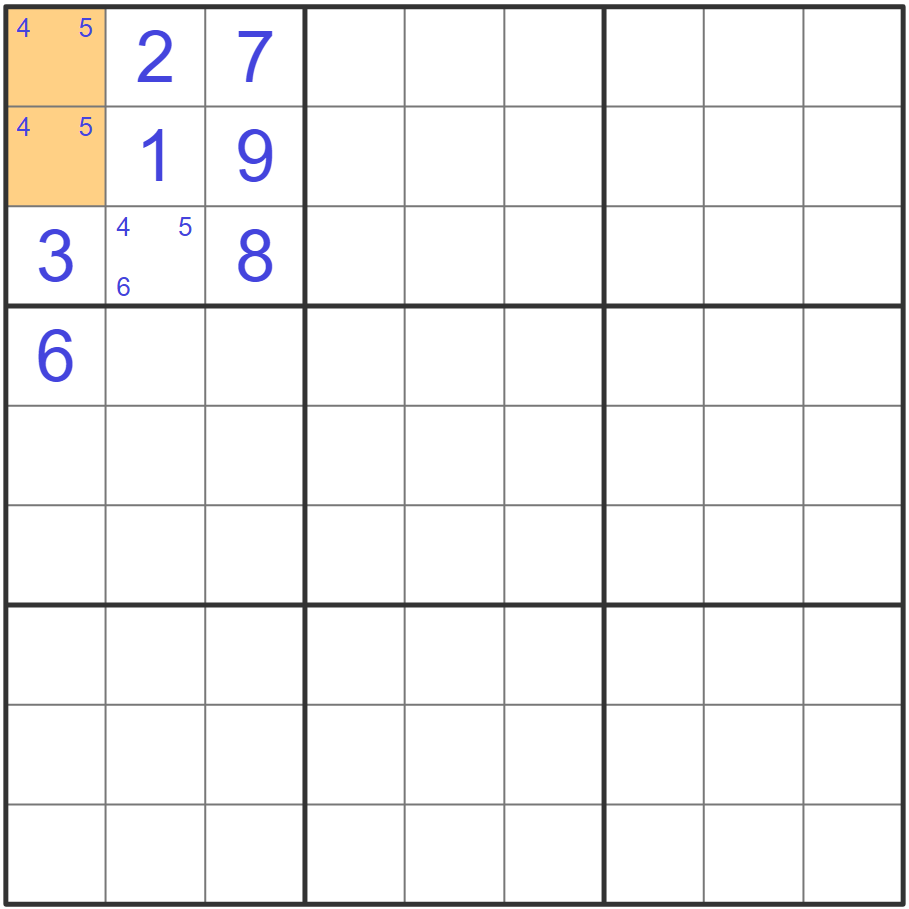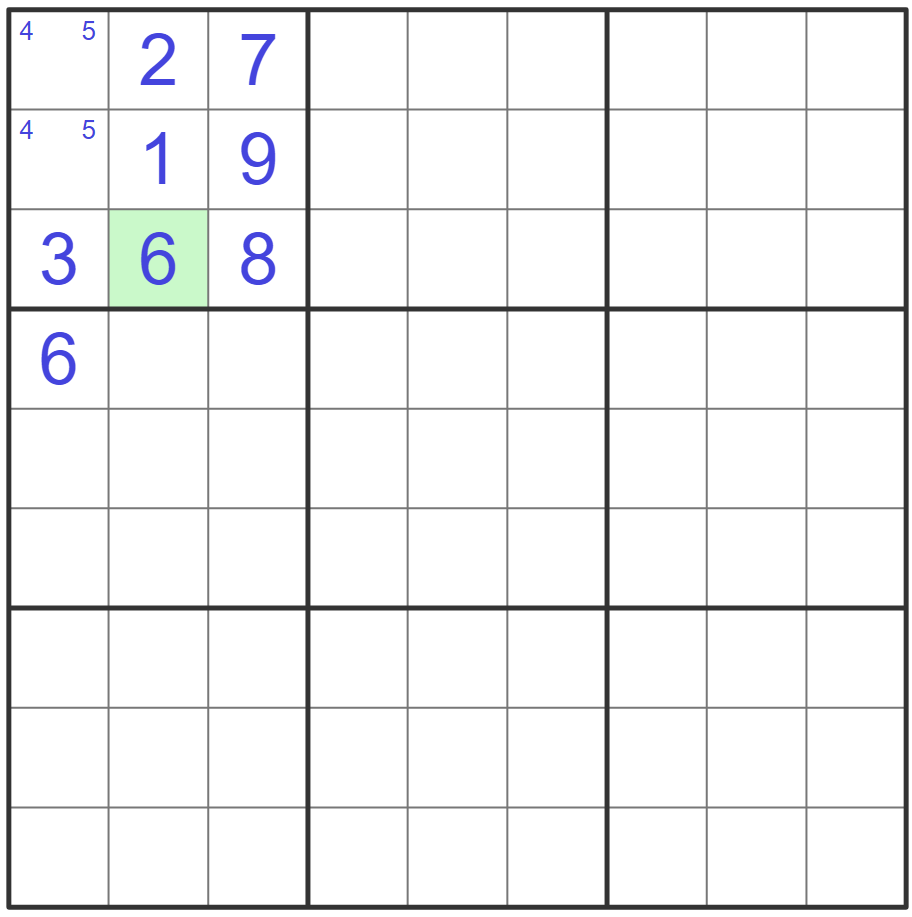Hidden Singles Sudoku Technique
The hidden singles Sudoku solving technique is a simple strategy that can be used to solve sudoku puzzles. It is also the foundation to more advanced strategies such as hidden doubles, triples and quadruples. Learning hidden singles will help you in understanding these other more advanced solving strategies.
This technique requires that you are already familiar with taking notes in a Sudoku puzzle. Once your Sudoku puzzle is filled in with notes, the hidden singles technique requires that you look for notes where there is only one number within the 3x3 block, row, or column.
Since a cell with a hidden single contains only that number within its 3x3 block, row or column, you are able to enter that number in the cell since it is the only possible option.
With obvious singles, the notes in a cell only contain one number, which makes it easy to spot and enter that number. However, with hidden singles there are other numbers entered as notes which make it more difficult to initially spot the only number.
How to spot a hidden single
To train yourself to spot hidden singles, you can use the following scanning pattern:
- Start by picking the lowest number that is not currently present in a 3x3 block.
- Look at the notes in all of the other cells to see if they contain the number you are looking for.
- If there is only one cell with that number as a note, you have found a hidden single.
- If thre are multiple cells with that number in the notes, there are no hidden singles in that 3x3 block.
- Start with the next highest number not present in the 3x3 block and follow the same scanning process.
- Use this process for rows and columns.
Hidden single example
Let’s go over an example to show you what a hidden single will look like in a puzzle.
In the below puzzle, we will solve the next digit in the 3x3 block highlighed in red using the hidden singles technique. Since this 3x3 block needs to contain numbers 1 through 9, we are currently missing a 4, 5 and 6.

We will start by adding in the notes, since this is required for the hidden singles technique to work. You can start by adding in the numbers 4, 5 and 6 into each of the empty cells in the first 3x3 block.

Since there is already a six in the first column in cell (c1, r4), we need to remove six from any of the notes in the first column that contain a six. This means that we will remove a six from cell (c1,r1) and (c1,r2) which are the cells highlighed in orange on the Sudoku grid in the image below.

Now that we have made the possible note candidate eliminations, we can start scanning for hidden singles using the steps above. If we start with the next highest number four we can see that there are three cells which contain a four (c1,r1) and (c1,r2) and (c2,r3) which means that there are not hidden singles.
For the number five when looking at the 3x3 block we can see that there are multiple cells once again that contain the number 5 in the notes, which means it can not be a hidden single. For the number six we can see that there is only one cell that contains this value in the notes. Although this cell (c2,r3) has three candidates in the notes, since it is the only cell in this 3x3 block that has the candidate six as a note, we are able to eliminate it and solve this cell for six.

The above Sudoku grid shows the solved (c2,r3) for the candidate six using the hidden singles strategy. This is a good strategy that you can employ to help solve Sudoku puzzles faster.
Now that you have learned this strategy, put it to use in a Sudoku game!